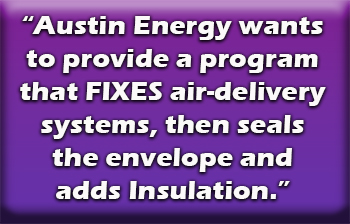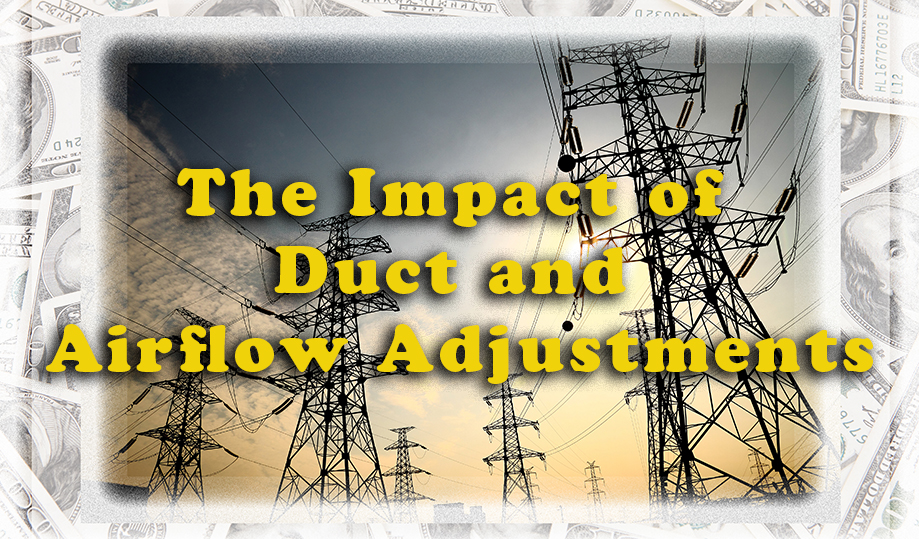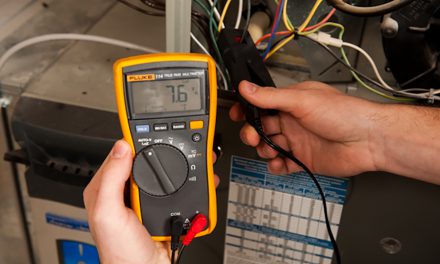Air Flow Design
We can gain substantial airflow performance and comfort with simple changes in plenum design. These include increased plenum length to accommodate air stabilization off the blower, a pressure-rebound zone, and an adequate take-off surface. We must also include more-efficient transitions when installing evaporators or adapting existing plenums and ductwork. Austin Energy’s pilot found unexpected gains by avoiding taps at specific areas of the plenum formerly used without hesitation.
Design and Install
The HVAC Industry has ignored proper airflow in individual duct runs for quite some time. Using duct triangles has gained traction while ignoring the costs associated with pressure and velocity. This approach might deliver airflow but miss the required velocity to make the terminal device work as designed.
Duct performance flow criteria are available through a few sources. Among them are ACCA Manual D and Manual T, and these calculations are required in some jurisdictions. You should take the time to understand both ACCA Manuals before attempting to design a duct system.
National Comfort Institute’s duct chart is available in their course material and on the internet. The chart is easy to use in general duct installations and is intended to back up Manual D and T calculations with real-world performance data. By the way, duct installation quality is even more important than equipment selection: duct installation quality will determine performance outcomes. In other words, we must pay attention to air duct installation as an industry.
Drop Throw and Spread

Unfortunately, as an industry, we pay very little attention to grille location and the type of grille used.
In Austin Energy’s pilot, we found same-size grilles from differing manufacturers flowing nearly 20% more air. Some homes could be fixed with grille replacement. It is imperative to avoid air delivery to exterior walls at velocities above 50 feet per minute (fpm) for homes in hot-and-humid climates. That practice can cause condensation and deterioration of construction material during mild weather.
In the U.S., the overarching goal has been to weatherize structures by sealing envelopes and adding insulation. With less than 15% of Austin, Texas homes without a central air conditioning system, the need to adopt a change becomes more apparent. Austin
Energy wants to provide a program that considers sustainability by fixing the air-delivery system, then sealing the envelope and adding insulation.
Fixing the air-delivery system later only calls for weatherization measures to be repeated. Consumers may be slow to accept the idea. Making a real effort to advance a system-performance approach enables contractors to provide homeowners with real options to make intelligent decisions regarding their most valuable home investment.
Poor Performance Costs Everyone
In conclusion, when poor system performance in the retrofit market is left unaltered, it costs everyone. It costs the consumer higher utility bills, poor comfort, and premature replacement. Poor performance also costs manufacturers through increased warranty and lost wholesale revenue. It costs the contracting community poor customer retention and lost income when managing service and retail sales callbacks.
Most importantly, system performance answers how we get the installation right.
Almost a decade later, Austin Energy continues to provide enhanced rebates on properly installed duct systems that deliver quiet and affordable comfort.
Tom Turner is an Environmental Program Coordinator for Austin Energy, Austin, Texas. A lifelong resident of Texas, Turner has worked in construction and the HVAC residential-light commercial industry for more than 40 years. He is an advocate for the “High-Performance HVAC Contracting” business model. You can reach him at ncilink.com/ContactMe.













Good information. Thank you,
Joe Moravek